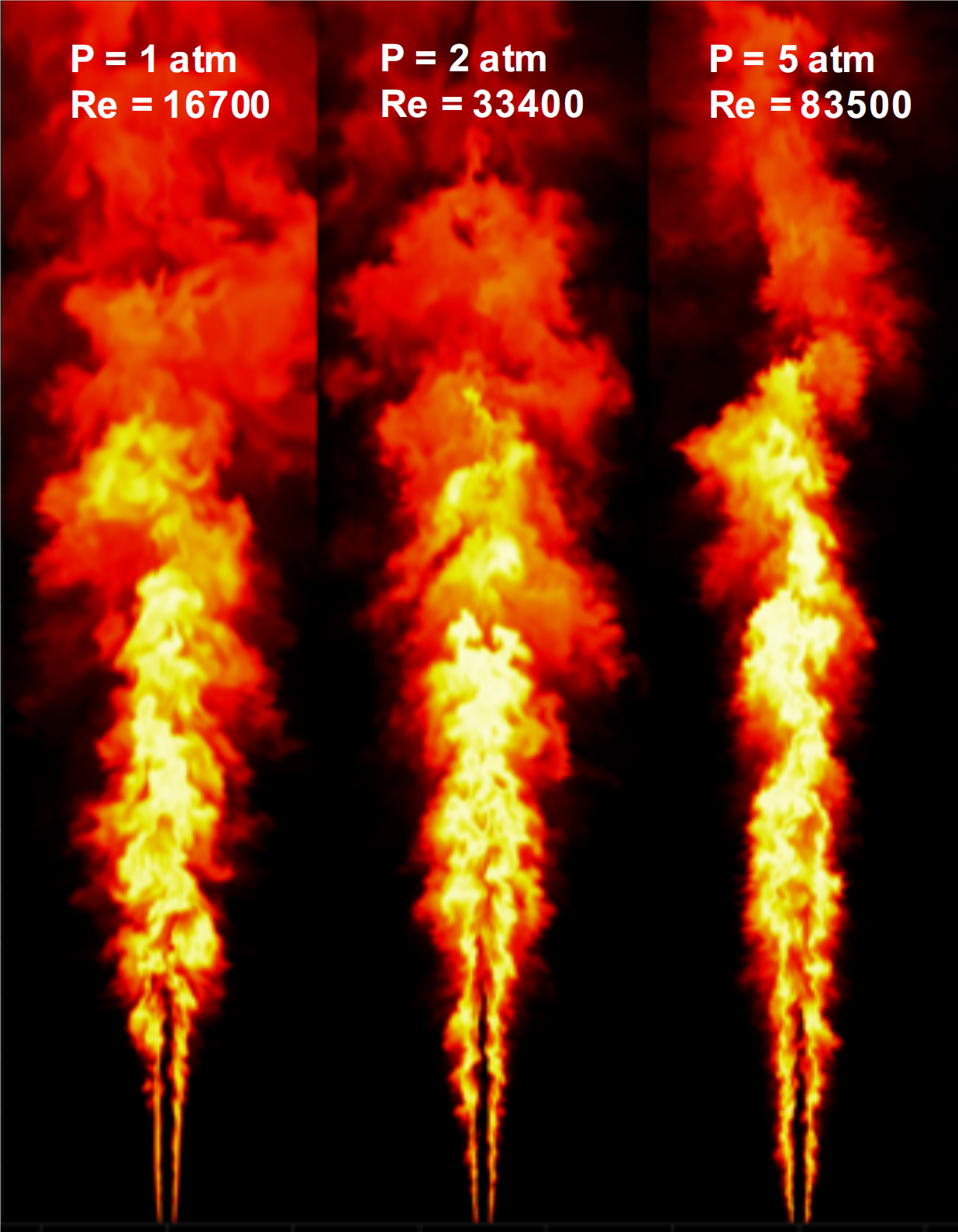Simulations of Canonical Flames and Beyond

Project by Prof. Hong Im

Firstly, the students will be introduced to the chemkin input files. Zero dimensional batch reactor analysis will follow, highlighting the chemical kinetics aspects of combustion phenomena. Later on, the students will be introduced to one dimensional laminar premixed flames and finally to non-premixed flames in the context of a counterflow configuration.
Introduction to batch reactor simulations
- Introduction to the chemkin input files. Arrhenius coefficients and thermodynamic data. How to set up a mechanism in chemkin pro. Examples with GRI3.0 and Aramco 2.0.
- Adiabatic flame temperature (p. 37, Sec. 1.4.6, C.K. Law Combustion). Calculation of the adiabatic flame temperature against equivalence ratio for methane, propane, ethylene and acetylene (Fig. 1.4.3 and 1.4.4). Discuss the results.
- Closed Homogeneous Batch Reactor. Governing Equations. 1st example with H2/air mixture. Generate plots for mass/mole fractions, temperature, heat release, reaction rates and compare/discuss the results. Perform sensitivity analysis. 2nd example with DME.
- Closed Homogeneous Batch Reactor. Ignition delay time. Methods used for its determination. Generate curve of ignition delay time vs initial temperature for ethanol and n-heptane. Discuss the results. Highlight the NTC response of n-heptane. Chemical pathways related to NTC regime.
Introduction to Premixed laminar flames
- Governing Equations
- 1st example with methane. Generate mass/mole fractions, temperature, heat release and reaction rates. Discuss the results.
- Repeat the same exercise with hydrogen and compare the results.
- Zones of a premixed laminar flame: upstream, preheat, reaction and downstream zones.
- Effect of Lewis number.
- Laminar flame speed vs equivalence ratio (methane and hydrogen) (p. 275-277, Fig. 7.7.1-7.7.4 C.K. Law Combustion).
- Dependence of laminar flame speed to adiabatic flame temperature (p. 275, Fig. 7.7.1, 7.7.2 C.K. Law Combustion)
- Laminar flame speed vs pressure (methane and hydrogen) (p. 279, Fig. 7.7.7-7.7.8 C.K. Law Combustion).
- Laminar flame speed vs length of axial position (methane and dme) (Pan et al. CnF 174, Krisman et al. CnF 188)
- Cool flames. Example with DME.
Introduction to non-premixed flames
- Counter flow flame of methane. Generate mass/mole fractions, temperature, heat release and reaction rates against physical space. Discuss the results. (p. 228, Fig. 6.5.3 C.K. Law Combustion)
- Generate same plots against mixture fraction space. Compare and discuss the results.
- Plot strain rate and velocity and discuss the results. (p. 228, Fig. 6.5.3 C.K. Law Combustion)
- Repeat the same exercise with different inlet velocities and compare the strain rates (p. 229, Fig. 6.5.4 C.K. Law Combustion).
- Flame extinction analysis